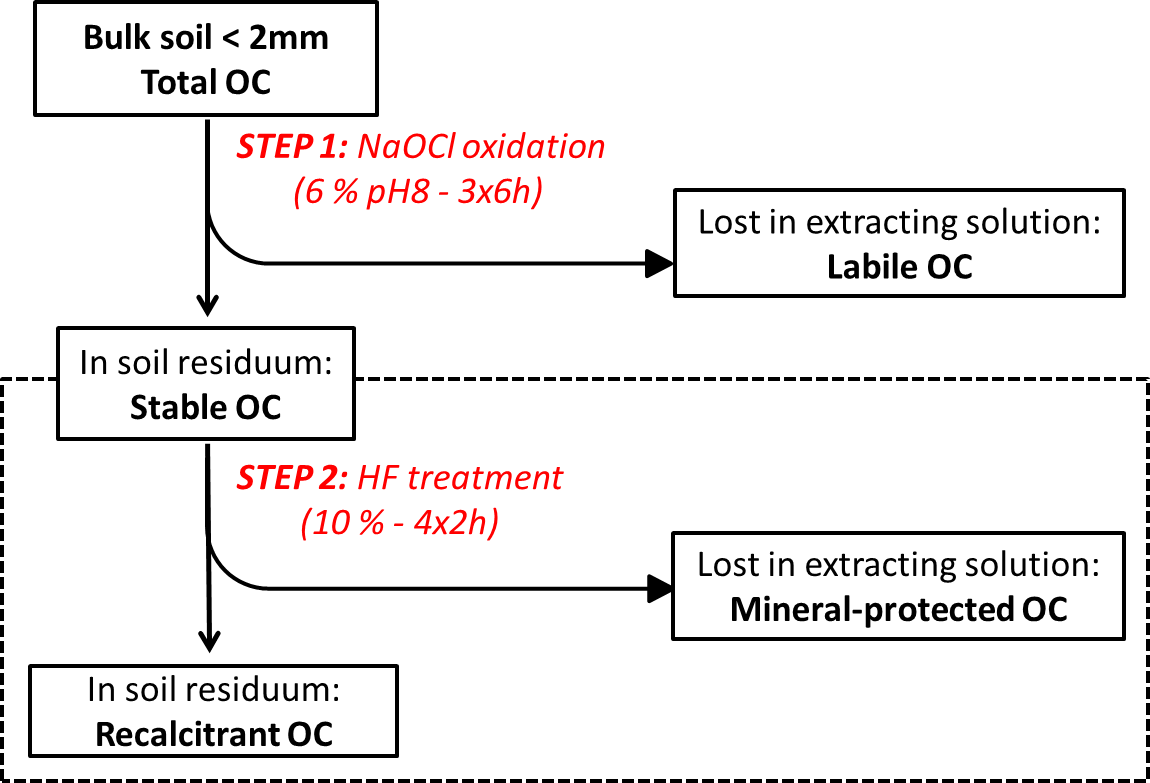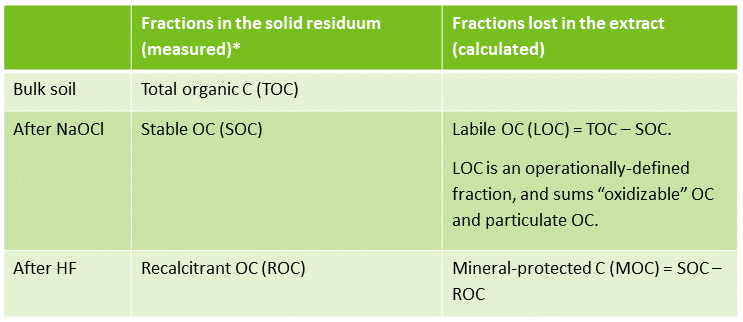Oxidation Mikutta

Description and working steps
STEP 1: NaOCl oxidation
3 g of air-dried soil sample were reacted three times with 30 mL of 6 wt% NaOCl adjusted to pH 8.0 during 6h at 25°C.
Samples were then washed twice with 30 mL 1 M NaCl and then with deionized water until the solution was chloride free (i.e. no reaction with AgNO3 occurred). Between each shaking step, the samples were centrifuged and the supernatant discarded. The samples were then dried at 60 °C and homogenized before C measurement on crushed subsamples.
STEP 2: Hydrofluoric acid (HF) hydrolysis
2.25 g of NaOCl-treated dry samples were transferred into pre-weighed centrifuge bottles, and shaken four times with 15 mL 10% HF during 2h, and then washed five times with 15 mL deionized water. Between each shaking step, the samples were centrifuged and the supernatant discarded. The samples were then dried at 60 °C and homogenized before C measurement on crushed subsamples.
Measurements and calculations:

Initial Aim
Separation of fractions according to protection mechanisms (mineral-protected and recalcitrant-C).
Advantages
- Advantages of the NaOCl: Chemical degradation of soil OM by oxidizing reagents is a method to preferentially remove OM structures unprotected by the mineral matrix. Furthermore, the chemical reactivity of OM to oxidation can be used as a proxy for readiness to microbial degradation. The oxidizing NaOCl attack is reported to be one of the most efficient and reliable to isolate stable OM (NaOCl-resistant OM), without dissolving pedogenic oxides
- Advantages of the HF: HF treatment is considered to only dissolve soil minerals and mineral-associated organic matter, while the non-associated soil organic matter remains nearly unaffected.
- Medium work load
- Not very expensive
Disadvantages
- Use of hazardous chemicals (HF)
- More difficult to implement when samples are clayey. Clay dispersion hampers sedimentation of the particles during centrifugation, and makes the solid phase isolation (to remove the supernatant) more difficult/time consuming.
- Two out of three fractions of interest are not retrieved but lost during fractionation. Their properties can thus only be calculated by difference. Direct measurements are not possible.
References
Mikutta, R., Kleber, M., Torn, M.S., Jahn, R., 2006. Stabilization of soil organic matter: association with minerals or chemical recalcitrance? Biogeochemistry 77, 25-56.